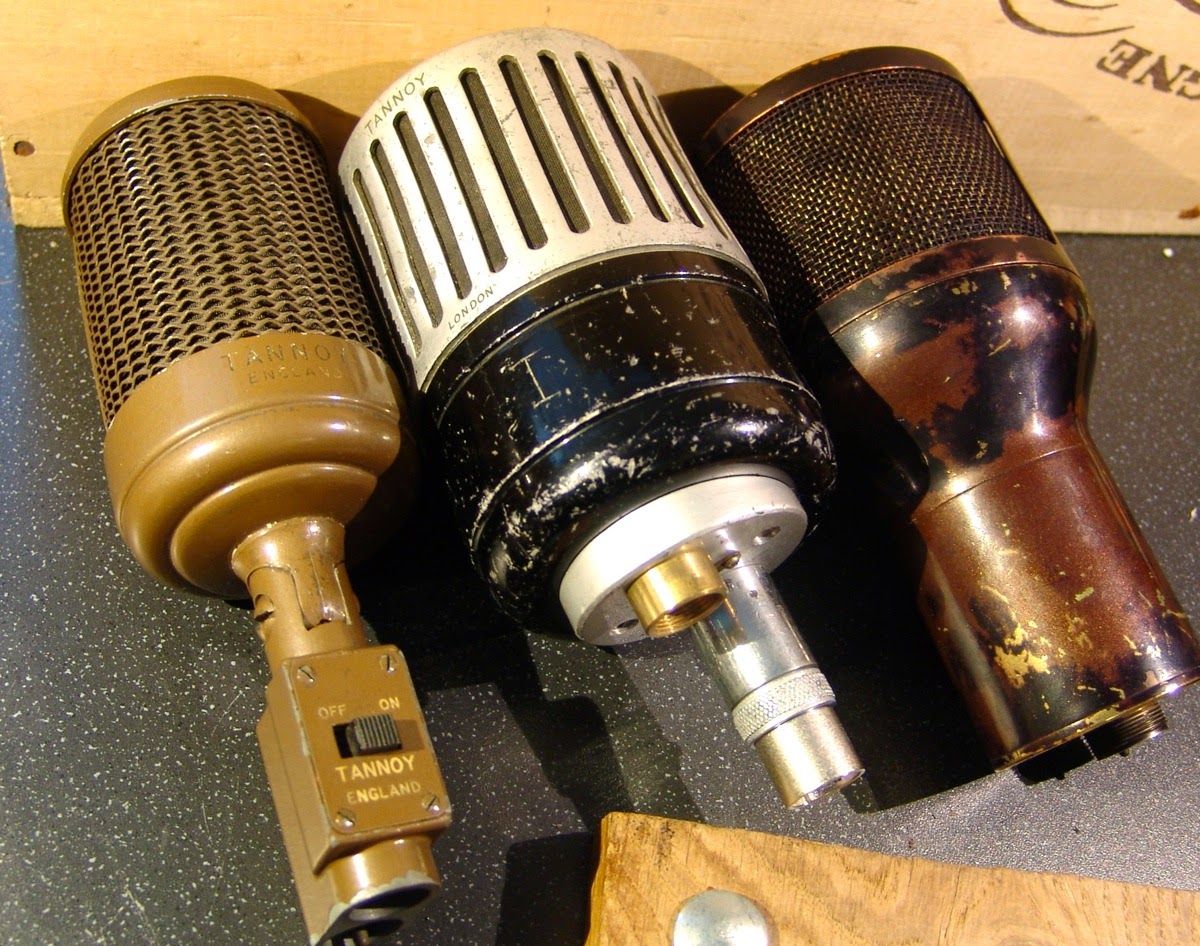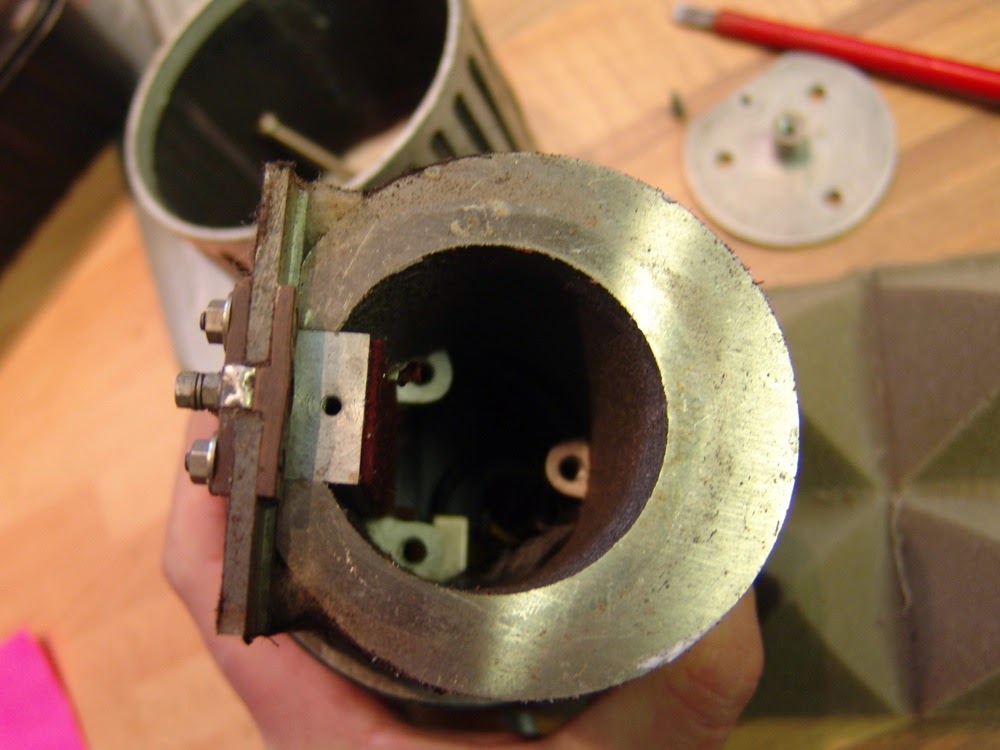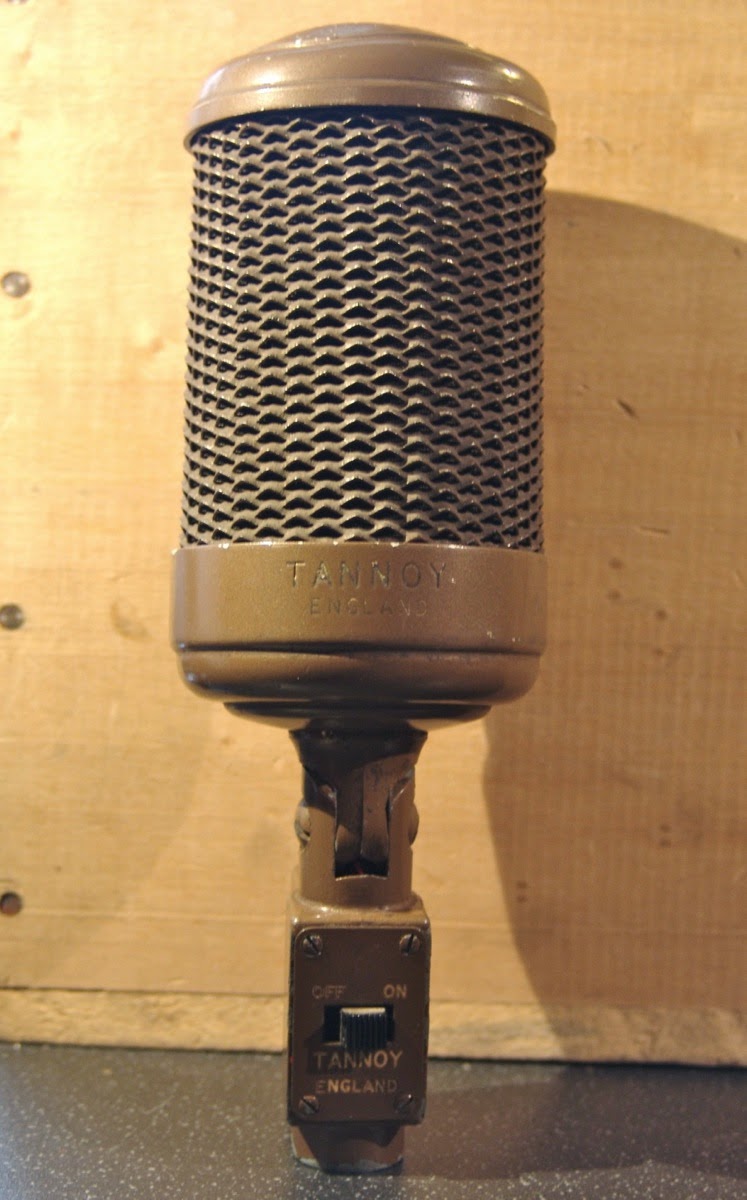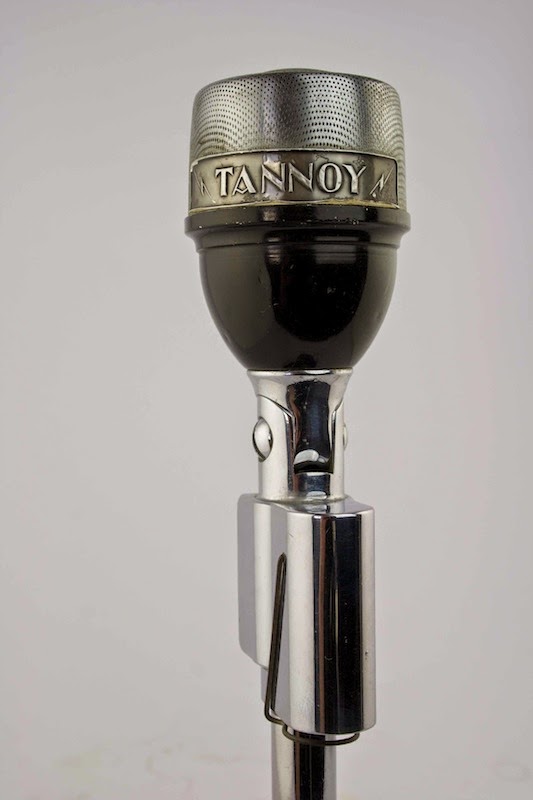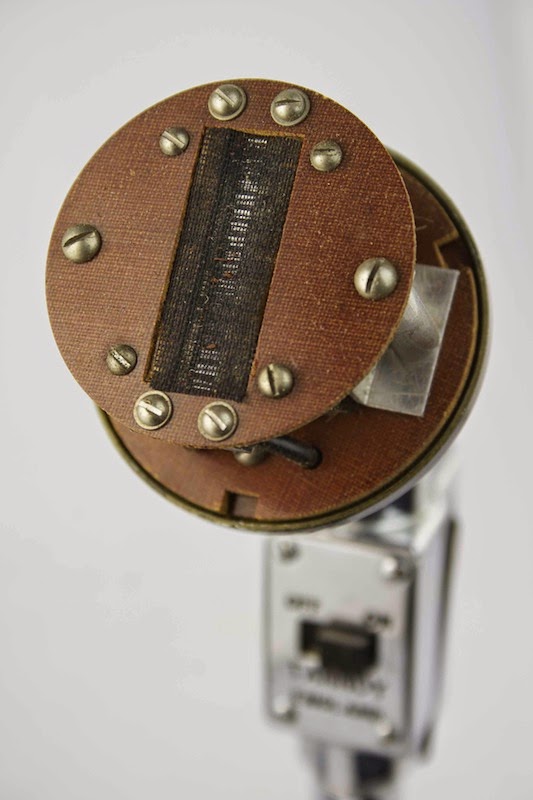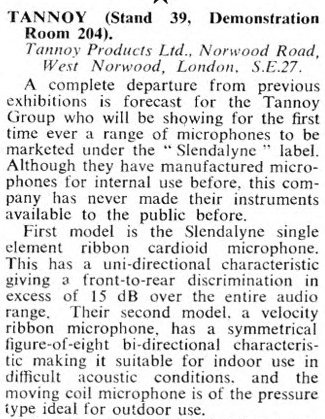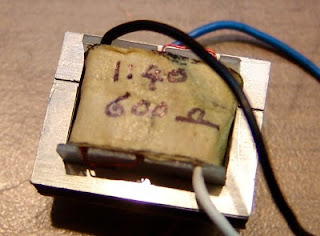The internal design of these two microphones is very simple, with a huge heavy horseshoe magnet providing both the magnetic field and creating an internal cavity to help control the pattern. The ribbon pole pieces are simple rectangular steel plates screwed into position.
There is a layer of felt behind the ribbon. I also expected to see the cavity behind the ribbon stuffed with horse-hair or cotton wadding, but in this example it was completely empty. There is a small transformer in the base of the microphone – in this example the output impedance was 2000 ohms, but I’m sure that other output options would have been available.
Despite the size, the output level is rather low.
The motor inside this mic is reminiscent of that from the STC 4104 lip microphone. It uses the same base and connector as the MD422 and MR425 models.
Update March 8th 2015
Tannoy were developing directional ribbon microphones from the mid 1930s onwards. I have never seen this model on the bench, but this sketch appears in Wireless world in September 1937:
Tannoy and the Houses of Parliament
Update March 8th 2015
Thanks to one of our readers for sending in a link to this announcement in Tape Recording magazine (1962, issue 5). This adds to the Houses of Parliament microphone debate.
The article announces two new ‘Slendalyne’ ribbon microphones from Tannoy – a cardioid and a bidirectional version. Yet the cardioid version looks very much like the brass-barrel mic that was supposedly installed into the Houses of Parliament 11 years earlier! This sentence is particularly intriguing: ‘Although they have manufactured microphones for internal use before, this company has never made their instruments available to the public before‘. The statement is not quite true as their earlier models were widely available. But this implies that these specific models had previously been supplied to select customers, and became available widely from 1962 onwards.
Thanks to Tom McCluskie, Jamie Neale of Real World Studios, and Marco van der Hoeven of Vintage Mic World, and everyone else for sharing information and photographs of their microphones.
